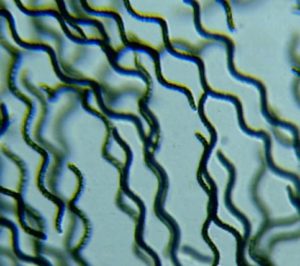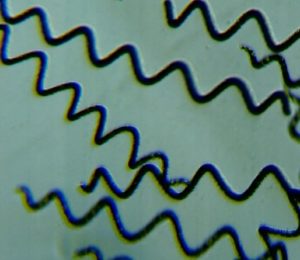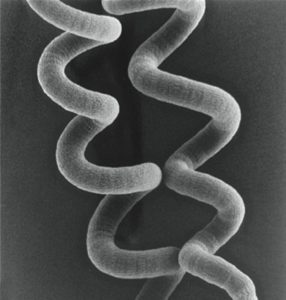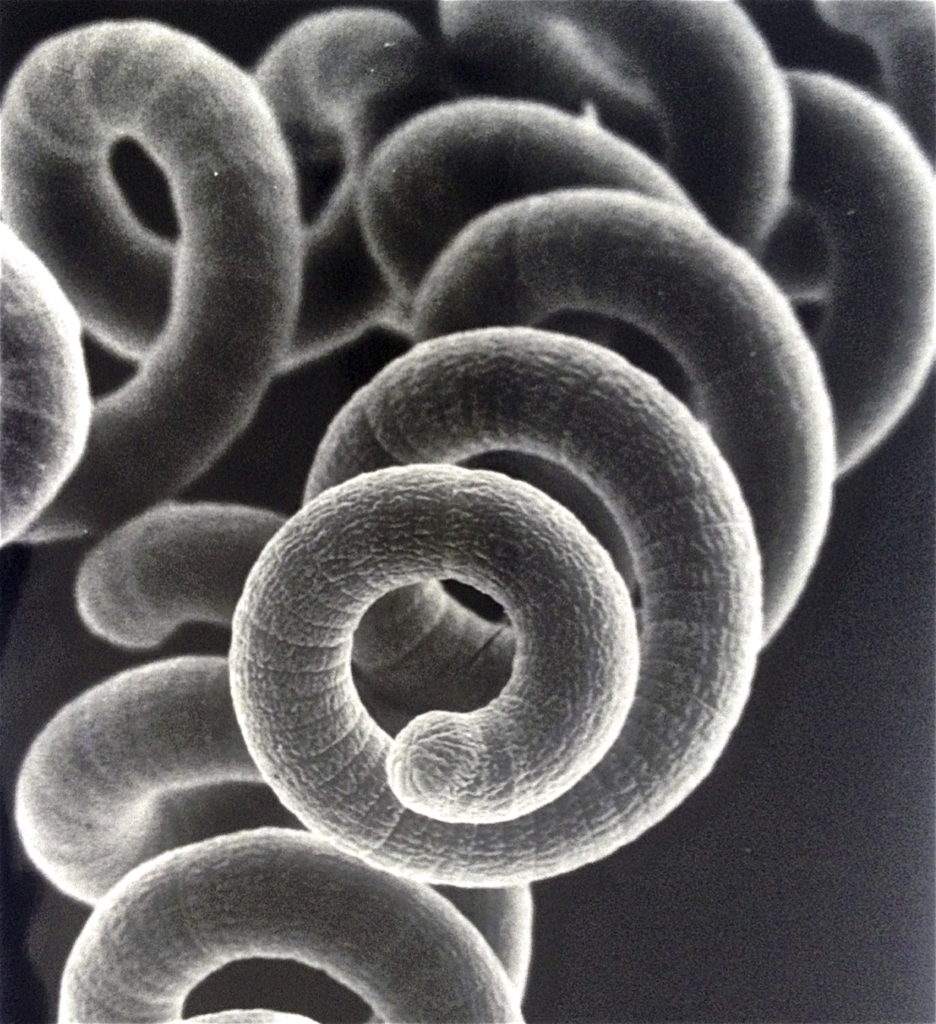Definition; A strain of spirulina is an inoculum obtained by the isolation and multiplication in a laboratory of a few carefully chosen organisms.
It is important to start your culture properly by multiplying a strain of spirulina which has been isolated and purified beforehand.
Starting a culture of spirulina with a strain whose quality and traceability are known is particularly important for professionals. The ANSES suggests spirulina producers pay attention to the quality of their strains in order to avoid the presence of potentially toxic contaminating algae in their cultures.
There are many strains of spirulina which are named after their places of origin. Paracas (Peru), Lonar (India), Chad, Tulear (Madagascar), Ethiopia, Camargue,…
Strains of spirulina originating from the same place may have very different characteristics depending on their cultivation history. It is important to name them precisely. Numbered identifications are generally chosen in relation to their last dates of isolation in a laboratory, or sampling in their natural environments.
HERE we provide the Paracas 22022 spirulina strain and the Camargue 91121 spirulina strain.
Why these 2 strains? Well firstly because we have an affinity with them, it turns out that it was Gilles who discovered them in their natural habitats, and he therefore knows them very well. Secondly because they have demonstrated their good qualities. Hardiness, productivity, ease of cultivation, ease of harvesting, etc.
Several scientific studies have demonstrated the value of Paracas Spirulina in particular, compared to other strains.
As for Camargue spirulina, it has not been studied extensively as of yet, but Gilles has been cultivating it since 2018, and it is turning out to be rustic and particularly tasty when eaten fresh.
It is quite possible to mix several strains of spirulina in a culture and see which one develops best.
PARACAS SPIRULINA
Characteristic of Paracas spirulina 22022
Wavy shape with 4 to 5 turns on average.
Robust and productive
Does not coagulate or straighten easily
Remains in suspension (rises very slowly to the surface).
Traceability of Paracas 22022 spirulina
~ Discovered and taken from its natural environment in 1992 by Gilles Planchon and Rosario Fuentes.
̴ Isolated by Jacques Falquet in 1996
̴ Cultivated by Gilles Planchon then Sébastien Herraiz (Spiruliniers).
̴ Isolated by the University of Caen since 2012 and multiplied by Gilles Planchon.
̴ Isolated and named Paracas 15016 and then Paracas 15020 and 15021 by the Rennes Limnology Center in 2015, 2020 and 2021 at the request of Gilles Planchon.
̴ Isolated and named Paracas 22022 by the Meurice R&D Laboratory in february of 2022.
̴ Mono-algal culture, non-axenic, without straight spirulina organisms or Phormidium.
History of Paracas Spirulina
Arthrospira platensis type “Paracas” is native to a desert region of the Peruvian coast, south of Lima, at the edge of the Paracas National Park.
It was discovered and collected by Gilles Planchon and Rosario Fuentes in 1992 in freshwater reservoirs flooded by a tidal wave a few years earlier; the sea being barely 200 meters away, it is very likely that spirulina was introduced there by migratory birds. The area is known to have a very high population of flamingos (flamingos are known for spreading spirulina).
There are other spirulina lakes in the surrounding desert; Lake Huacachina, for example, which is 50 km as the crow flies from Paracas.
Paracas spirulina was discovered in brackish water with a salinity of 15 g/l and a pH of 8.7. We can therefore consider that it is more of maritime than volcanic origin. It had when it was first discovered only 3-4 turns maximum of characteristically wavy shape.
It was first isolated by Jacques Falquet who reproduced it in a laboratory and compared it to other species (Lonar, Maxima). It has proven to be the most productive and resilient. As a result, it was chosen as a strain in 1998 by the first producer to settle in France (Philippe Calamand). Since then, many producers have chosen Paracas spirulina.
In 2011 Antenna Technologie filed a public patent on its genome in order to protect any attempt at private filing by seed companies. http://www.antenna.ch/documents/spiruline_genome.pdf
Some cases of “sudden death” have since been observed by spirulina producers, without the cause really being elucidated yet. We believe this must be linked to cultural practices not adapted to its real needs.
Urban expansion has gotten the better of the spirulina deposit in the drinking water reservoirs of Paracas, which have now disappeared. It is therefore no longer possible to collect this strain in its natural environment. Hence the importance of preserving its original qualities as well as possible and ensuring that it does not degenerate in crops.
CAMARGUE SPIRULINA
Characteristics of Camargue 91121 spirulina:
~ Lonar type spiral shape
~ Hardy and resistant to the cold
~ Can coagulate if badly agitated and if there is a nitrogen deficiency
~ Does not become straight
~ Rises slowly to the surface without agitation
Traceability of Camargue 91121 spirulina:
~ Discovered in its natural environment in 1995 by Gilles Planchon and Rosario Fuentes.
~ Collected on 9/11/2021 in its natural environment by Mickael
~ Isolated by the Meurice R&D Laboratory in February 2022 at the request of Gilles Planchon.
~ Mono-algal, non-axenic culture, without straight spirulina or Phormidium.
History of Camargue Spirulina:
Camargue spirulina was discovered in 1995 by Gilles Planchon and Rosario Fuentes in the region of Aigues Mortes (34), France.

It was first observed in lagoons between the southern saltworks and the Listel estate at the waste outlet of a winery.
Isolated and identified by Ripley Fox, and following his initiative, photographed under an electron microscope. (photo attached)
Observation for 3 consecutive months in its environment by Gilles Planchon and Rosario Fuentes allowed for a better understanding of its natural behavior.
In the summer of 2010, a deposit of spirulina was discovered in the Saintes Marie de la Mer region. Gilles has been observing and studying it regularly ever since. Complete analysis of the composition of its environment have been carried out with the financial support of the FSF.
Gilles was the first producer to cultivate spirulina from the Camargue. This strain of French origin seems particularly suited to cultivation in our latitudes. Gilles goes regularly to the Camargue to take samples which he introduces into his culture so that his strains do not degenerate.
Camargue spirulina is very popular in France because it is local, but also because it has a particularly sweet taste.
The Camargue strain having changed morphology in the deep pools at the Roquette farm. Gilles has renamed the spirulina he grows; Spirulina Sarah, named after the Virgin of Saint Marie de la Mer.



